Key Takeaways
1. The Fundamental Divide: Augmenting vs. Replacing Humans
One researcher attempted to replace human beings with intelligent machines, while the other aimed to extend human capabilities.
A core dichotomy. At the dawn of the Information Age near Stanford University, two distinct visions for computing emerged: John McCarthy pursued artificial intelligence (AI) to simulate and replace human capabilities, while Douglas Engelbart championed intelligence augmentation (IA) to extend human intellect and collaboration. This fundamental difference in intent defined a paradox: the same technological advancements that empower humans can also displace them.
Silicon Valley's roots. This AI vs. IA split is deeply embedded in Silicon Valley's history. Early institutions like Stanford Research Institute (SRI) and the Stanford Artificial Intelligence Laboratory (SAIL) housed researchers pursuing both paths, often in isolation. This division persists today, influencing how engineers design systems that either integrate humans into the loop or engineer them out.
Economic drivers. While philosophical differences exist, the choice between augmentation and automation is often driven by economics. As sensors, computing power, and AI software become cheaper, it becomes increasingly "rational" to replace human labor with machines, even in complex tasks previously thought to require human intelligence.
2. Early Visions: From Mythical Golems to Mechanical Minds
The first modern robot in literature was conceived by Czech writer Karel Čapek in his play R. U. R. (Rossum’s Universal Robots) in 1921, and so the golem precedes it by several thousand years.
Ancient fears, modern machines. The idea of creating artificial life or intelligent machines has roots in ancient myths like the Golem and early literature like Čapek's R.U.R., often carrying warnings about unintended consequences. This cultural backdrop shaped early perceptions of robots.
Pioneering efforts. In the mid-20th century, figures like Norbert Wiener foresaw the profound impact of automation and cybernetics, warning of both potential benefits and dangers like widespread unemployment and machines escaping human control. Early projects like SRI's Shakey the robot and the Stanford Cart were ambitious attempts to build autonomous machines, laying groundwork for modern AI and robotics despite limited computing power.
Early AI goals. The formal field of artificial intelligence was christened at the 1956 Dartmouth workshop with the explicit goal of making machines simulate every aspect of human intelligence. Early AI research focused on logic, problem-solving rules, and mimicking human cognition, often with overly optimistic timelines.
3. The First AI Winter and the Ascendance of Human Augmentation
Just as AI stumbled commercially, personal computing and thus intelligence augmentation shot ahead.
Hype and disappointment. Despite early optimism, AI research faced significant technical hurdles and failed to deliver on its ambitious promises, leading to periods known as "AI Winters" where funding and interest waned. Early expert systems, intended to bottle human knowledge, proved fragile and expensive, contributing to a commercial collapse in the 1980s.
The rise of the PC. In contrast, Engelbart's vision of augmenting human capabilities gained momentum. Technologies like the computer mouse, hypertext, and graphical user interfaces, pioneered or inspired by his work, became the foundation for the personal computer revolution. Figures like Alan Kay, Steve Jobs, and Lee Felsenstein championed the PC as a tool to empower individuals.
A philosophical shift. The commercial success of personal computing reinforced the IA philosophy, demonstrating the power of technology designed to extend human intellect and creativity. Many researchers who had worked in AI shifted their focus to human-computer interaction, disillusioned by AI's failures and drawn to the tangible impact of personal computing.
4. The Internet Era: Scaling Human Collaboration and Knowledge
The Web rapidly became a medium for connecting anyone to anything in the 1990s, offering a Lego-like way to link information, computers, and people.
Connecting minds. Building on earlier networking efforts like the ARPAnet (funded by Licklider and Taylor), the World Wide Web, invented by Tim Berners-Lee, provided a universal platform for information sharing and collaboration. This dramatically scaled Engelbart's vision of augmenting collective human intelligence.
Mining human intelligence. Companies like Google, founded by Larry Page and Sergey Brin (mentored by IA proponents like Winograd and Motwani), built their success on algorithms like PageRank that implicitly mined human decisions (links) to organize and prioritize information. This was a powerful form of intelligence augmentation on a global scale.
New forms of collaboration. The Internet enabled new ways for humans to collaborate and build collective knowledge, from online communities and open-source software projects (like Gruber's Hypermail) to crowd-sourced initiatives like Galaxy Zoo. This demonstrated the power of human-centered design leveraging network effects.
5. AI's Resurrection: The Power of Machine Learning and Big Data
Today, a series of probabilistic mathematical techniques have reinvented the field and transformed it from an academic curiosity into a force that is altering many aspects of the modern world.
A new approach. After the AI Winters, the field revived dramatically, driven by advances in statistical methods, machine learning, and particularly neural networks ("deep learning"). Researchers like Geoffrey Hinton, Yann LeCun, and Terry Sejnowski pioneered techniques that allowed machines to learn from vast amounts of data, overcoming limitations of earlier rule-based AI.
Fueling the revival. The explosion of digital data from the Internet and the dramatic increase in computing power (Moore's Law) provided the essential ingredients for these new AI techniques to flourish. Cloud computing made massive processing power accessible, and smartphones became ubiquitous sensors generating data.
Corporate gold rush. Major tech companies like Google, Facebook, and Microsoft recognized the power of deep learning for applications like image recognition, speech processing, and translation. This led to a talent war for AI researchers and significant investments, marking a new "AI Spring."
6. Modern Manifestations: Autonomous Machines Enter the Physical World
Today, machines are beginning to act without meaningful human intervention, or at a level of independence that we can consider autonomous.
Self-driving vehicles. DARPA's Grand Challenges accelerated research in autonomous vehicles, leading to projects like Google's self-driving car and commercial features like traffic jam assist. While promising safety benefits, this technology directly challenges jobs for millions of drivers.
Robots in the workplace. Advances in robotics, including walking machines (Boston Dynamics) and dexterous arms (Industrial Perception), are enabling robots to perform tasks previously requiring human hands and eyes. This is leading to increased automation in manufacturing, logistics (Amazon warehouses), and potentially even retail.
Military applications. Robotics and AI are transforming warfare, from autonomous drones to weapons systems capable of making targeting decisions without human oversight (like the LRASM missile). This raises profound ethical questions about delegating life-and-death decisions to machines.
7. The Virtual Assistant: AI Meets Human-Computer Interaction
For Jobs, however, Siri was genuinely his “one last thing.”
Conversational interfaces. Building on early programs like Eliza and SHRDLU, virtual assistants like Apple's Siri, Google Now, and Microsoft Cortana are bringing AI into daily human interaction. These systems aim to understand natural language and perform tasks on behalf of the user.
Augmentation or replacement? While virtual assistants can augment human capabilities (e.g., hands-free texting while driving), they also raise questions about the nature of human connection and potential isolation, as explored in works like "Her" and Sherry Turkle's "Alone Together."
Design choices matter. The design of these interfaces, whether mimicking human personality (Siri) or acting as a pure information oracle (Google Now), reflects underlying philosophies about the ideal human-machine relationship. The success of Siri suggests a human-like interface can be compelling, even if the underlying intelligence is limited.
8. The Automation Paradox: Technology Reshapes, Not Necessarily Ends, Work
On one level, they will do both.
Job displacement vs. creation. Historically, technology has displaced jobs in certain sectors (e.g., agriculture, manufacturing) while creating new ones. Mainstream economists often argue that this process continues, with technology eliminating tasks but not the overall need for human work.
The "hollowing out". Recent trends suggest automation and globalization are disproportionately affecting middle-skill, routinized jobs, leading to a "hollowing out" of the workforce. White-collar jobs (e.g., legal discovery, clerical work) are increasingly vulnerable to automation.
Debate over the future. While some predict a "job apocalypse" where AI makes most human labor obsolete (Vardi, Kurzweil), others argue that human creativity will generate new job categories or that automation will lead to increased leisure and a focus on human-centric activities (entertainment, caregiving, education). The ATM example shows how automation can eliminate some jobs (clerks) while preserving or creating others (tellers, repairers).
9. Beyond Labor: Societal, Ethical, and Existential Consequences
The specter of machine autonomy either places human ethical decision-making at a distance or removes it entirely.
Surveillance and privacy. The rise of ubiquitous computing and AI-driven data collection raises concerns about pervasive surveillance, extending beyond government (Orwell's Big Brother) to commercial entities ("Little Brothers").
Autonomous weapons. The development of weapons capable of independent targeting and lethal decision-making poses a significant ethical challenge, potentially lowering the threshold for conflict and raising questions of accountability.
Elder care and human connection. As societies age, robots are proposed as solutions for caregiving and companionship. While potentially addressing labor shortages, this raises questions about the quality of care and the nature of human connection when mediated by machines.
Existential risks. Some prominent figures (Musk, Hawking, Joy) warn of potential existential threats from advanced AI, ranging from unintended consequences to machines surpassing and potentially eliminating humanity. While debated, these concerns highlight the need for careful consideration of AI's long-term trajectory.
10. The Designer's Choice: Shaping the Future of Human-Machine Relationships
Whether we augment or automate is a design decision that will be made by individual human designers.
The power of design. The path forward—towards a future where machines are masters, slaves, or partners—is not predetermined. It is shaped by the choices made by the engineers and scientists who design these systems.
AI vs. IA philosophies. The historical divide between AI (rationalistic, modeling humans as machines) and IA (human-centered, designing tools to extend humans) represents fundamentally different approaches with distinct consequences for society. Figures like Terry Winograd exemplify the choice to prioritize human-centered design.
Dual-use technologies. Like nuclear power, AI and robotics are dual-use technologies with potential for both immense benefit and harm. Unlike previous dual-use technologies, machine autonomy introduces the possibility of removing human ethical decision-making from the loop.
The need for ethical engagement. The history of biotechnology (Asilomar conference) offers a model for scientists proactively considering the societal implications of their work. As AI advances rapidly, there is a growing call for the AI and robotics communities to engage more deeply with the ethical consequences of creating increasingly autonomous and intelligent machines.
Last updated:
Review Summary
Machines of Loving Grace explores the history and future of AI and robotics, focusing on the dichotomy between AI replacing humans and IA augmenting human capabilities. While praised for its comprehensive research and interesting anecdotes, some readers found it repetitive and lacking in-depth analysis of societal implications. The book covers key figures and developments in the field from the 1960s to present day. Critics noted that the narrative sometimes jumps around chronologically and gets bogged down in biographical details. Overall, it provides a solid historical overview but may not fully address the philosophical questions it raises.
Similar Books

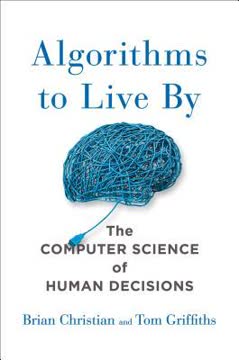
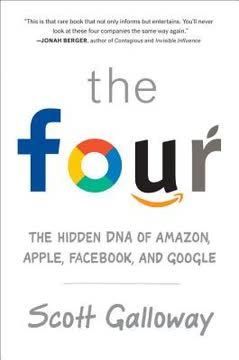


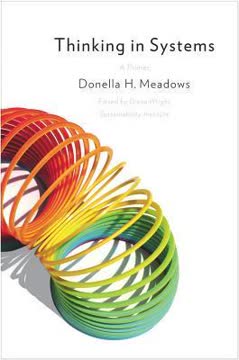
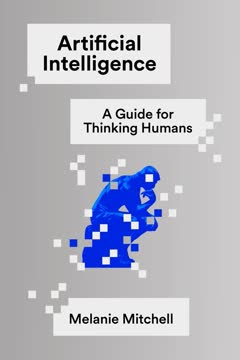
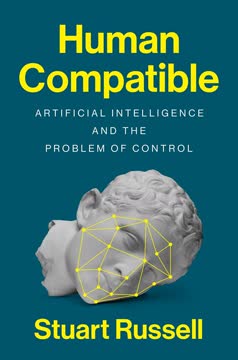
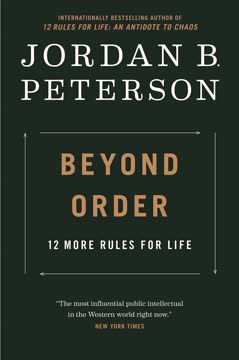
Download PDF
Download EPUB
.epub digital book format is ideal for reading ebooks on phones, tablets, and e-readers.





